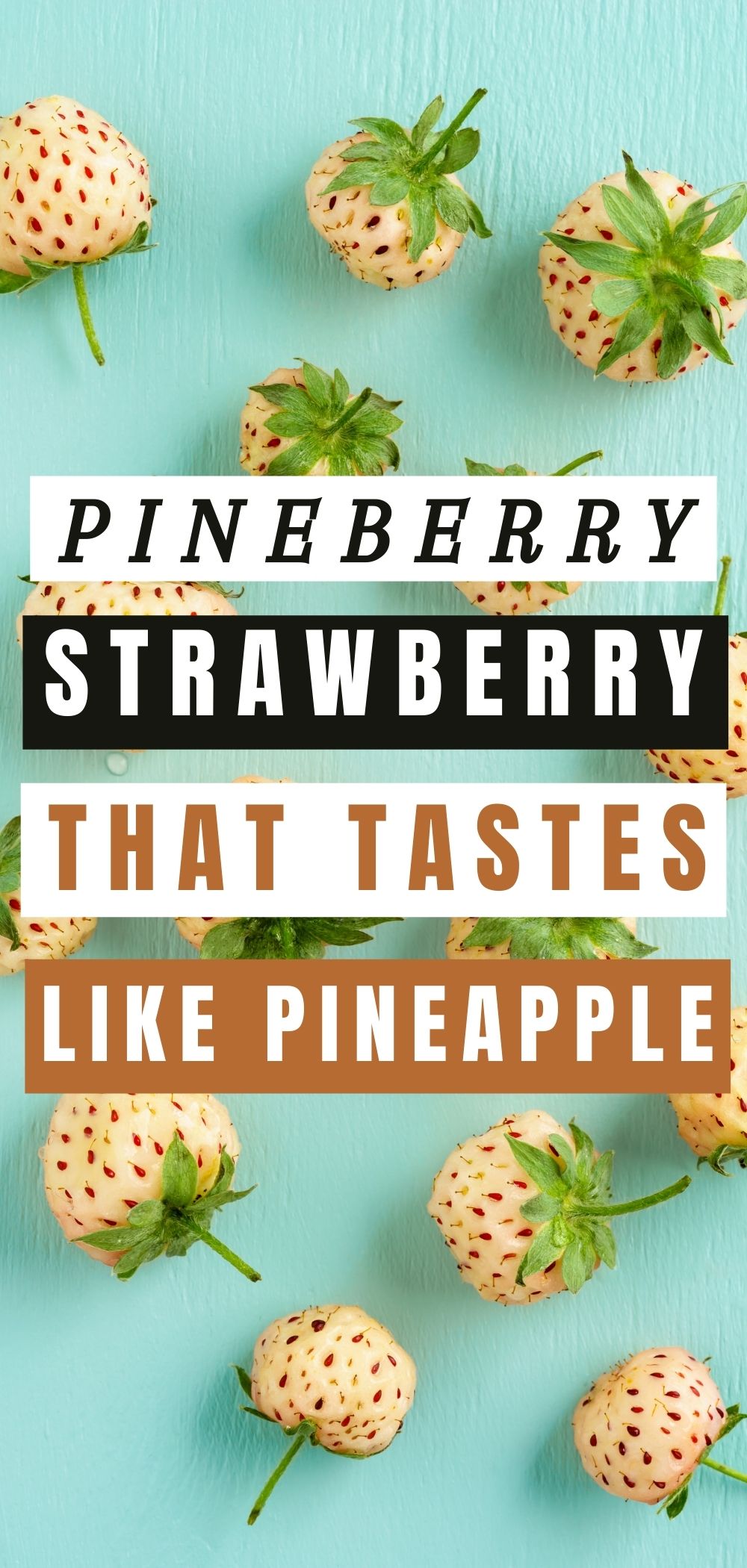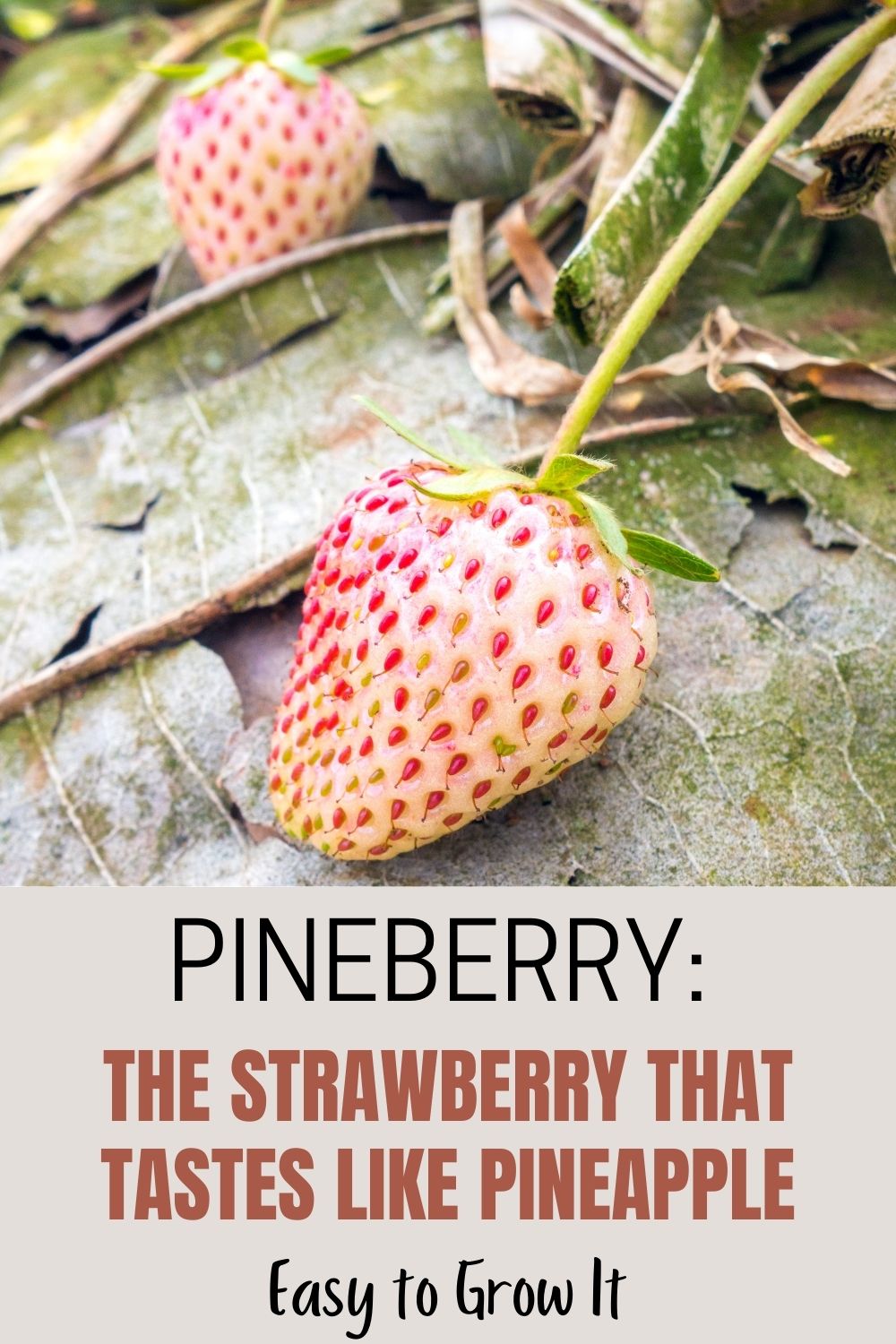PLANTS
Pineberry: The Strawberry That Tastes Like Pineapple (Easy to Grow It)
Have you ever seen pineberries? If you haven’t tried any, look for white strawberries with red seeds. The tiny fruits have a similar taste to pineapples. Yes, they are also known as pineapple strawberries. The plant is a result of the crossing between two varieties of strawberries.
Pineberries are a cross between Fragaria virginiana and Fragaria chiloensis varieties. Some like to call it albino strawberries.
White strawberries were cultivated by the native people of Chile. Pineberries may grow between 0.6″ to 0.9″ (1.5 to 2.3 cm). That’s pretty much the same size as the smallest variety of “regular” strawberries.
Experts from the University of Missouri say that pineberries shouldn’t be confused with the true “albino strawberry.” Red strawberries are affected by some disorders, and don’t taste really good.
Pineberries are really soft when ripe, and spoil fast. That’s why you should try growing your own. Keep in mind that pineberries aren’t GMO fruits.

Nutritional value
Given that pineberries are a cross between strawberry varieties, they share similar nutritional value. Red strawberries are packed with vitamin C and fiber. A 2018 study found that the Chilean white strawberry is high in polyphenols and antioxidants.
Health benefits
Pineberries are as good as red strawberries. They contain a lot of fiber and water, and that’s good for your digestive tract. Fiber adds bulk to your stool and prevents/relieves constipation. Water eases bowel movement.
A 2017 study on rats confirmed that pineberries reduce inflammatory response. These strawberries are also viewed as a good source of phenolic antioxidants.
Pineberry varieties
White Carolina pineberry
It tastes like pineapple and becomes pink when exposed to sunlight. This variety is susceptible to diseases and you need to use organic fungicides.
Natural Albino pineberry
It’s delicious and produces smaller fruits. This variety requires cross-pollination with regular strawberries.
White D pineberry
It has larger fruits with great taste. This plant produces fruits several times throughout the growing season.
White Pine pineberry
It doesn’t produce big yield. The White Pine pineberry is a hardy variety that produces a lot of runners.
Grow your own pineberries
Can you grow red strawberries? Yes? Well, you can grow pineberries, too.
Use a couple of starters in the first year. Pineberry plants are self-pollinating plants, and you can plant them near regular red strawberries. Don’t worry, this won’t change their color or taste.
For optimal results, consider planting Natural Albino pineberry cultivars next to Sonata strawberries. Pineberry plants need 6-10 hours of sun and well-draining soil that stays moist.
Plant your pineberries in spring as the soil needs to be warm. If you plant your pineberries in fall, use a lot of mulch over the starts to protect them. Don’t plant your pineberries near eggplants, potatoes and tomatoes.
The holes should be 30 cm apart. Pineberries like moist but not overly wet soil. You can use a drip system. When it comes to fertilizers, use organic product every 2-4 weeks.
Harvest your pineberries when they turn white or pinkish-white.
Common problems
Pineberry plants are usually affected by diseases that destroy their leaves and roots. Irregular watering will make the leaves brown. Prune, water and feed your plants to prevent leaf scorch.
Install a mesh over your pineberries to keep garden bests away from your fruits. You can also use diatomaceous earth. It’s safe for use. Reapply it after rainfall, because it doesn’t work when it gets damp.

If you want to find more natural remedies, take look at the Everyday Root Book!
With 350+ pages, you will be able to replace all of the toxic products and medications in your home with healthier, all-natural alternatives.
You will be confident in knowing exactly what is in the products your family uses and happy with the money you will save every month.
In addition, they offer you three more bonuses + 75% discount only this month!
GET THE EVERYDAY ROOTS BOOK NOW!
Included in this life changing book are:
- 105+ NATURAL HOME REMEDIES – Treat almost any illness with natural ingredients you probably already have in your kitchen.
- 75+ NATURAL BEAUTY RECIPES -Get the best hair and skin you’ve ever had and look younger with these insanely clever natural beauty recipes.
- 35+ DYI HOUSEHOLD PRODUCTS & CLEANERS – Never Buy Toxic Cleaning products again! Save a fortune and your families health with these super simple homemade cleaning products that work better than the chemical ones.


